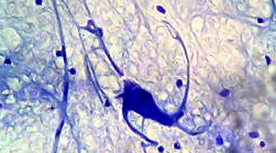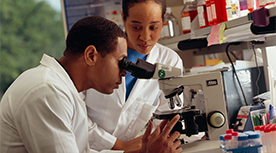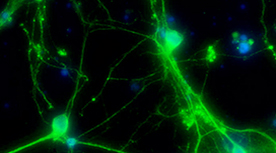MLD
 DEVELOPING TREATMENT OPTIONS FOR METACHROMATIC LEUKODYSTROPHY (MLD)
DEVELOPING TREATMENT OPTIONS FOR METACHROMATIC LEUKODYSTROPHY (MLD)
B4B has just concluded the Project ‘Developing treatment options for Metachromatic Leukodystrophy (MLD)’.
MLD is a rare and genetically determined disease that manifests itself mainly during childhood leads to early death.
It can also develop during adolescence with a more protracted course. The project lasted two years and was aimed at investigating effective treatment options for MLD.
Different specialised research centres took part in this research programme.
The project consisted of 8 independent but integrated sub-projects. This MLD-specific research was conducted under the guidance of leading European experts in their own labs. The project focused on basic science and natural history to provide a solid platform to create and improve therapies, including enzyme replacement, gene therapy, hematopoietic and neural stem cell transplantation, and substrate reduction therapy. The sub-projects are closely intertwined since the science developed in one can be tested in another.
The bulk of the funding allocated to the MLD core projects come from B4B. This grant covers about 70% of the MLD Core research.
Follows a short description of the individual subprojects, their related objectives and main outcomes.
 CLINICAL HISTORY
CLINICAL HISTORY
Ingeborg Krägeloh-Mann/ Tübingen/ GermanyNatural History – To make an international epidemiological survey and description of the natural course of metachromatic leukodystrophy during childhood and adolescence. 130 MLD patients were enrolled and data bank highlighted 6 level of disease severity
MECHANISMS OF ENZYME REPLACEMENT THERAPY
- Hans Joachim Galla / Münster / Germany Absorption of ARSA across the BBB – to set up in vitro (lab) experiments to characterize the receptors and the mechanism responsible for endothelial cells absorption and effective transfer of the Arylsulfatase A enzyme
- David Begley / London / UK ARSA and BBB Animal Studies – To perform in vivo (animal) studies of nanoparticle vectors to get recombinant human enzyme ASA (rhASA) across the BBB
- Ingolf Blasig / Berlin / Germany
Fusion PeptidesTo set up procedures for in vitro preparation of ASA enzyme and test its effectiveness in combination with fusion peptides that should facilitate its passage through the BBB. - Project 5 Jörg Kreuter and Gelperin a / Frankfurt / Germany Diverse nanoparticle to facilitate BBB crossing – to develop and employ diverse nanoparticles made of different polymeric materials and verify the efficiency and biocompatibility.
 THERAPIES
THERAPIES
- Project 6 Volkmar Gieselmann / Bonn/ Germany Cerebroside Transferase Enzyme (CST) – to research and develop, by means of transgenic mice, the inactivation of CST for the substrate reduction therapy.
- Scarpa / Padova / Italy and Angelo Luigi Vescovi / Milan / Italy Neural Stem Cells – to use animal model investigations into the use of neural stem cell both a therapy for MLD and to repair the nerve damage caused by a genetic enzyme deficiency and the resulting accumulation of substrate characteristic of MLD.
- Project 8 Alessandra Biffi / Milano / Italy Gene Therapy with HSCT – to set up research studies and clinical trials using hematopoietic stem cell gene therapy to cross correct the ARSA deficiency by manipulation with therapeutic viral vectors and an autologous transplant.
So far 7 papers reporting main outcomes have been published. Although in vitro approaches produced good results, some problems occurred with enzyme purification and brain delivery in animal model. Substrate reduction therapy produced encouraging results since 60% of treated patients demonstrated residual activity.
